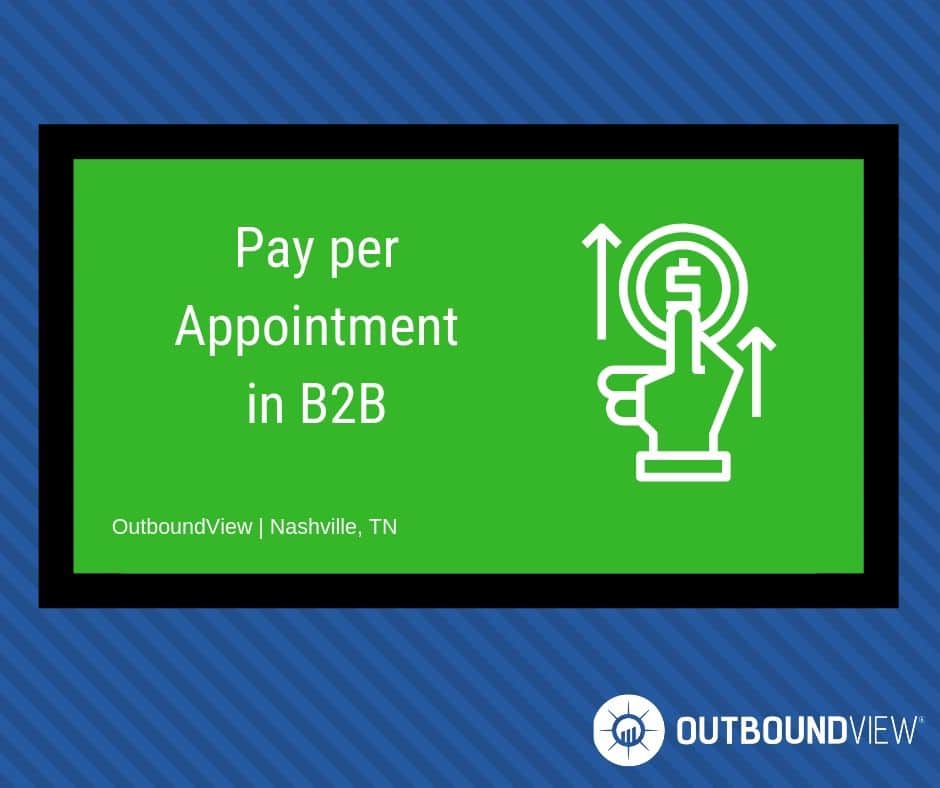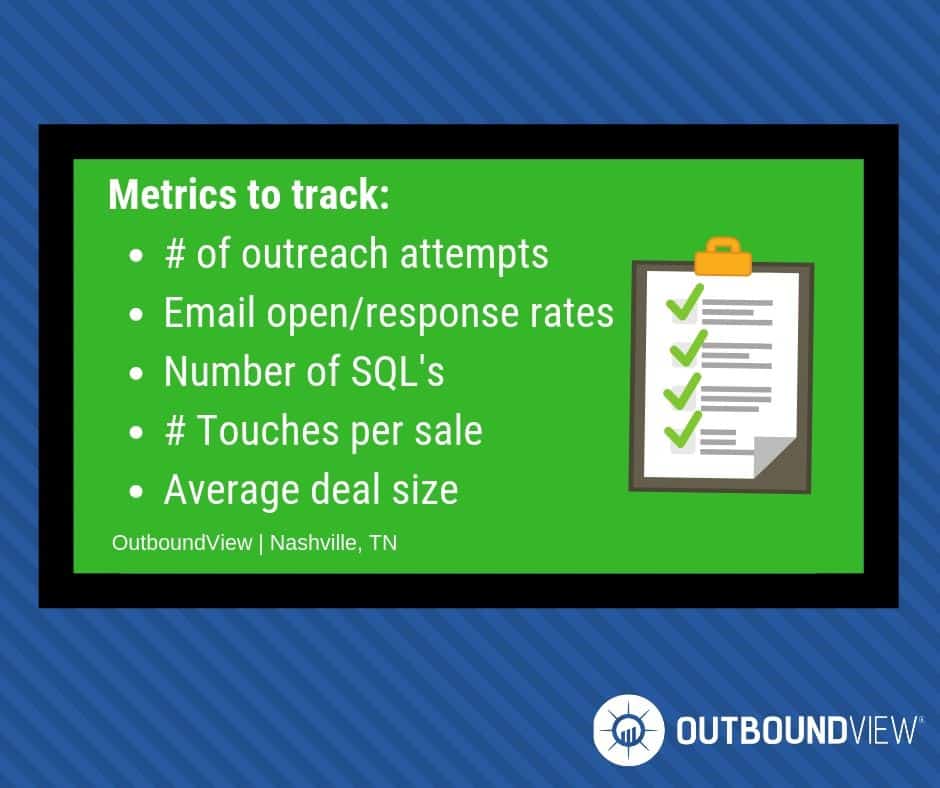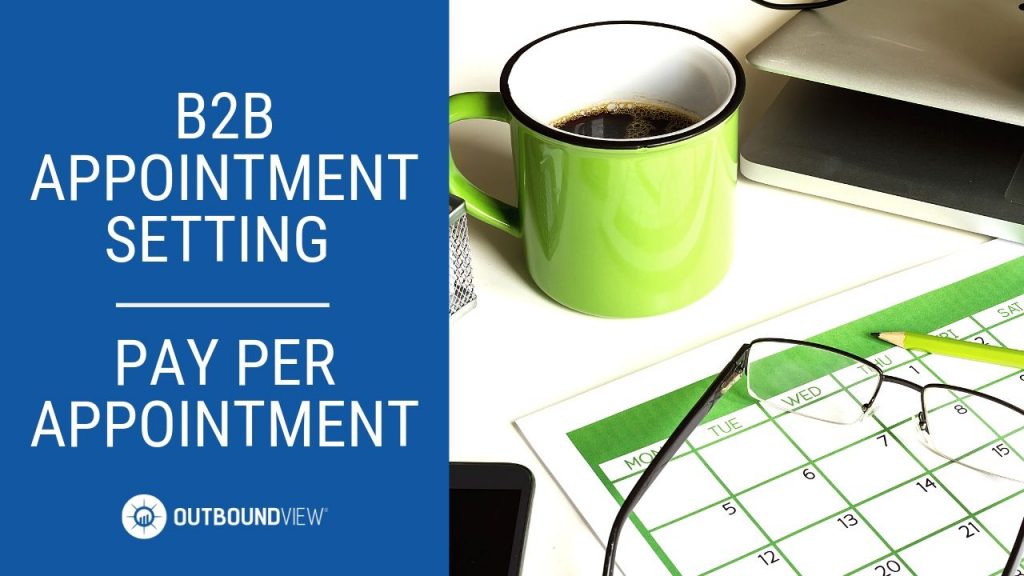In the B2B appointment setting world, there are typically a few common ways to pay appointment setting companies. Most of the time, there is a base monthly fee for a certain level of service or dedicated time. On top of the base fee, there will be some type of commission structure in place for number of appointments set. This is the pay per appointment model for B2B appointment setting.
Data from InsideSales.com shows that most commonly, the base salary/commission split is 60% – 40%, with 60% for the base and 40% for commission.
The Pay Per Appointment Model
Many B2B businesses will look to outsource their inside sales teams, if they don’t have enough resources to build a team themselves. A lot of times, they will look to get the best bang out of their buck by paying only for appointments set. As the owner of an appointment setting company, I regularly get asked how we structure our fees. Many times, the first question from a potential prospect is whether we are willing to do a pay per appointment structure. Most of the times, our response is yes. We are willing to do this setup especially if we have experience working in the prospect’s industry. If we don’t have experience in that specific industry, it is much tougher for us to agree up-front to this type of engagement. We will most likely charge an implementation fee for it.
Normally we will agree to a trial period of some kind where we are testing and learning the market. Once we understand the specifics of the industry, then we are more than willing to do a per meeting set.

Pay Per Appointment is Not Always the Best Bet
Many of the best appointment setting companies won’t agree to kicking off a project purely on a pay per appointment basis. Most will require a lock-in on number of months or an implementation fee. I can explain in detail why this is the case.
With outbound marketing, there are a lot of variables. Even the best outbound marketing campaigns start unpredictably. The best outbound marketing teams are very good at making adjustments. Testing to find what works and then making adjustments based on your findings are the most critical part of an outbound marketing team. As the appointment setting company, we don’t know what’s going to happen until we start testing. To be successful, we need to understand:
- How your company’s brand will play in the market
- What is your value prop and will that resonate with the target market?
- Who are the buyers? You won’t understand this until the initial conversations and feedback from outreach.
So what type of legit company would take on the risk to test all this on your behalf without compensation? I’ll tell you who’s willing to take this type of risk. Someone who is spamming the market. Someone who will not spending enough time learning your business. More often than not, it is someone who will do more harm than good for your brand.

Pay Per Appointment: Beware of the Tire-Kickers
To be frank, a lot of tire-kickers will ask this question. They will be prospects who are looking for someone to work for them for free. Or just owners who aren’t willing to truly invest in testing inside sales. Let me explain.
There are a lot of reasons to outsource appointment setting. You may not have the management infrastructure to support an inside sales team. Or you may need to scale much quicker than you can hire and train. Both of these reasons are legit. However, one of the main reasons inside sales teams fail is because the entire idea is underfunded.
B2B outbound marketing done correctly is pretty expensive and can take a while to start showing results. So if you plan on testing for 1-2 months or throwing a few thousand dollars at an appointment setting company, you will fail. That’s not how inside sales works. From the prospect’s perspective, it may sound ideal to only pay for each appointment set. But many times that isn’t the case.
If you’re still on the fence, consider this. Most appointment setting companies will raise their price for this model purely because it’s so unpredictable.
Per Appointment Set, The Wrong Type of Carrot
Per appointment set engagements can also reward the wrong types of activity. As I mentioned above, adjustments are one of the most critical things when it comes to outbound marketing.
What if you start setting appointments and after a few weeks you realize this is the wrong buyer persona? Or maybe your prospects are asking for something very different than you are offering?
If you are paying per appointment set, your appointment setting company is incentivized to set any appointment. They are not incentivized to set “the right” appointment. This means you need to set the right compensation structure for the sales development reps.

From our perspective, one of the fairest ways to pay for appointment setting is by agreeing on sales activity metrics. For example, in month one we will agree to executing ‘x’ amount of calls and emails.
This is one of the most common KPI for sales development teams. It’s also the reason why you shouldn’t go with a metric such as “talk time” for your sales reps.
- Number of outreach attempts per day/week/month
- Open and response rates for emails
- Number of SQL’s (sales qualified leads) per week/month
- How many calls does it take to get a conversation or a sale
- Average deal size
With all of this and other information (what converts and what not, for example), we can scale what’s working and kill what’s not working.
Agreeing to activities also gives the prospect the ability to make sound business decisions. After a few months, you will predictably know how many activities should create what type of sales pipeline, or possible closed deals.
With that information you can decide whether you scale your outbound marketing efforts or bring SDR’s in-house.
Conclusion
Pay per appointment can certainly work in some situations, but it’s not always the best way to get the most out of appointment setting. From our experience, pay per appointment can create alignment issues.
Remember that most legit companies would never accept this without learning about your business first. They will either get an implementation fee upfront, or lock you in a contract for a few months.
Be sure to explore other payment models for appointment setting that may be better aligned for ongoing success.






